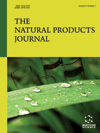
Full text loading...

Breast cancer remains a significant health concern worldwide, prompting extensive research into alternative therapies, such as herbal medicine. This review paper will provide insight into the potential of four herbal remedies, namely Thymus vulgaris (thyme), Hibiscus, Artemisia annua (sweet wormwood), and Moringa oleifera, in the management of breast cancer. Thymus vulgaris exhibits anti-cancer properties through its bioactive compounds, including thymol and carvacrol, which demonstrate cytotoxic effects against breast cancer cells. Hibiscus extracts have been shown to inhibit breast cancer cell proliferation, induce apoptosis, and suppress tumor growth by targeting various molecular pathways. Artemisia annua, particularly its active component artemisinin, exhibits promising anti-cancer effects through the induction of apoptosis, inhibition of angiogenesis, and modulation of cell cycle progression in breast cancer cells. Additionally, Moringa oleifera, rich in bioactive compounds like quercetin and kaempferol, exhibits anti-cancer properties by inhibiting cell proliferation, inducing apoptosis, and suppressing metastasis in breast cancer. These herbal remedies offer potential avenues for further investigation as adjunct therapies or standalone treatments for breast cancer management. However, rigorous clinical trials are warranted to elucidate their efficacy, safety profiles, and optimal dosages for clinical use.

Article metrics loading...

Full text loading...
References


Data & Media loading...